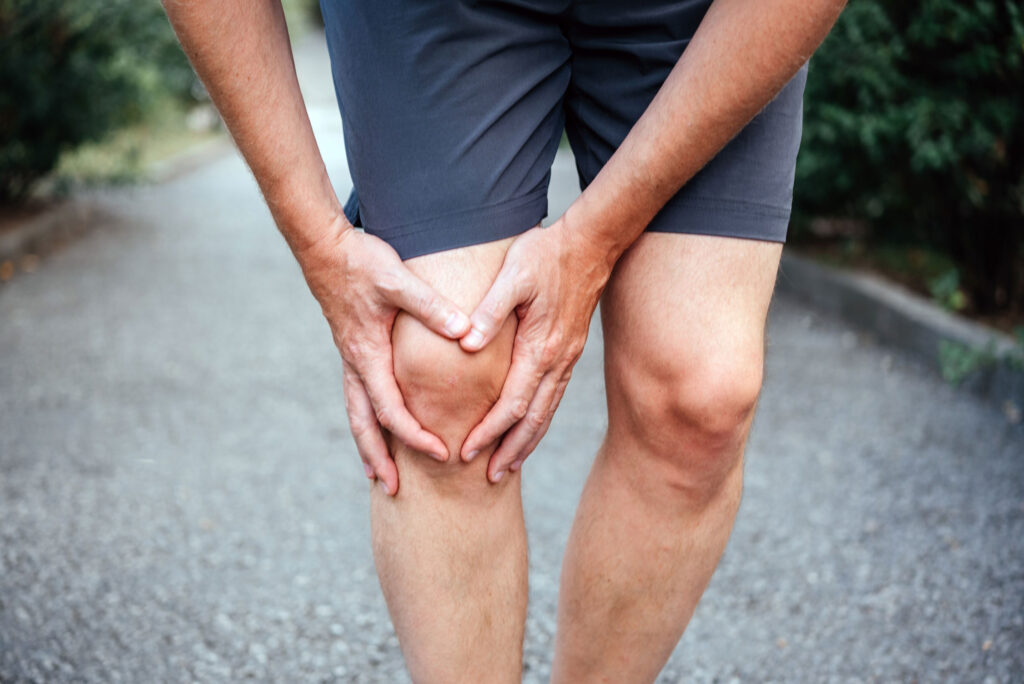
Knee osteoarthritis can lead to a range of painful and debilitating complications, one of them being cartilage lesions. These lesions, which occur when the cartilage that pads the ends of the bones near the joint is damaged, can be quite severe and cause significant pain. In addition to pain, they can also lead to impaired movement and instability in the joint.
The most common type of cartilage lesion is called a chondral defect. This is caused by sudden or repetitive trauma to the joint and can result in permanent damage to the cartilage due to lack of blood flow. Other types of cartilage lesions include osteochondral (OC) lesions, where both bone and cartilage are affected, and softening or thinning of the cartilage known as articular surface degeneration (ASD).
Cartilage lesions caused by knee osteoarthritis can be debilitating and often lead to impaired movement, instability in the joint, and even permanent damage. Unfortunately, current treatments are often not enough to prevent these serious complications from occurring.
The medical community must develop more effective treatments that are tailored to each individual’s unique needs. This could include a range of medications, physical therapy, lifestyle changes, or even surgery for those with more severe cases. Stem cell therapy involves injecting healthy adult stem cells into the affected area in order to promote healing and regenerate new tissue.
Studies have shown that this approach can reduce pain and improve joint function, but further research is needed to determine its full potential as an effective treatment for cartilage lesions. A study, Second-Look Arthroscopic Evaluation of Cartilage Lesions After Mesenchymal Stem Cell Implantation in Osteoarthritic Knees, looked into the potential of stem cell therapy for this medical issue.
Results of the Study
This study was conducted to evaluate the clinical outcomes of knees that underwent second-look arthroscopic surgery after implantation of MSCs for cartilage lesions in OA knees. The International Knee Documentation Committee (IKDC) score and Tegner activity scale were utilized to measure the clinical results, while International Cartilage Repair Society (ICRS) grading was used to assess the cartilage repair. Statistical analyses were also carried out to determine associated prognostic factors.
The 37 included patients presented with isolated full-thickness articular cartilage lesions in their OA knees (Kellgren-Lawrence23 grade 1-2). Additionally, they reported symptoms of joint pain and/or functional limitations, despite at least 3 months of nonoperative management. Following accurate debridement of all unstable damaged cartilage from the lesion, it was filled with MSCs under arthroscopic guidance.
After undergoing MSC implantation, the mean IKDC score and Tegner activity scale score improved significantly. The average IKDC score increased to 61.0 ∓ 11.0 and the average Tegner activity score increased to 3.6 ∓ 0.7. Regarding overall patient satisfaction with the operation, 63% reported excellent results, 31% good results, 6% fair results, and no one reported poor satisfaction. All 35 patients indicated that they would be willing to repeat the procedure if necessary.
At a second-look arthroscopic procedure, it was revealed that the lesions which had been present on the counterface surface of 37 patients had healed and there was no need for any treatments. According to the ICRS overall repair grades, 2 of these cases (5%) were grade I (normal), 7 (19%) were grade II (near normal) , 20 (54%) were grade III (abnormal), and 8 (22%) were grade IV (severely abnormal). The scores from both IKDC and Tegner activity scales correlated negatively with ICRS repair grade; as the ICRS repair grade increased, the IKDC and Tegner activity scale scores decreased.
In the present study, a case series was conducted to evaluate cartilage repair after MSC implantation in OA knees using second-look arthroscopic surgery. Results showed that 24% of lesions had achieved a normal or near-normal state (ICRS grade I or II). However, 76% of lesions remained in the abnormal state (ICRS grade III or IV) with worse clinical outcomes for the latter cases than the former.
Most ICRS grade III or IV lesions also showed incomplete integration with adjacent cartilage. Because most patients did not have good cartilage coverage, it is likely that it will not fare well over time. Nevertheless, encouraging clinical outcomes were observed. The anti-inflammatory function of MSCs may be one possible explanation for the improved results and emerging evidence suggests that the application of MSCs to the joint can boost normally limited repair and limit destructive processes.
The study revealed encouraging outcomes of MSC implantation for restoring cartilage in OA knees. Patient weight and the size of the cartilage lesions were found to be important factors influencing the clinical results when evaluated through a second-look arthroscopic surgery. Despite being in its early stages, MSC implantation appears to be an effective method for treating cartilage lesions in OA knees. However, further development of an advanced surgical procedure with tissue-engineered scaffolds may be necessary to treat patients with large cartilage lesions.


